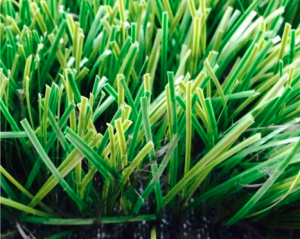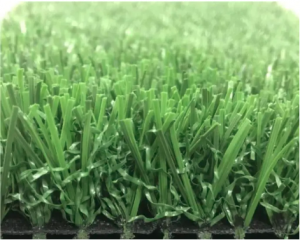Maintaining a high-quality sports turf is critical to ensuring peak performance on the field. Whether it's a soccer field, tennis court or golf course, proper maintenance plays a vital role in maintaining the integrity and longevity of the playing surface. In this article, we'll explore the importance of maintaining sports turf and the various practices involved in achieving high-quality results.
Sports turf can experience significant wear and tear due to constant foot traffic, equipment use and exposure to the elements. If not maintained regularly, playing fields can deteriorate, leading to safety hazards, reduced playability, and potentially expensive repairs. Therefore, implementing a proactive maintenance program is critical to maintaining the highest standards of sports turf.
One of the main requirements of maintaining a sports lawn is constant mowing. Regular mowing helps maintain a high degree of uniformity throughout the field, prevents uneven playing fields, and reduces the risk of tripping or injury. Proper mowing techniques, such as using a sharp blade and adjusting the cutting height, can ensure a clean cut without damaging the grass or soil. Additionally, removing grass clippings and debris after mowing helps prevent thatch buildup and allows the lawn to breathe.
Besides mowing, irrigation is another important aspect of sports lawn maintenance. Adequate watering is critical to promoting healthy grass growth, preventing drought stress and controlling disease outbreaks. However, overwatering can lead to waterlogging, which can negatively affect root development and promote weed growth. Achieving the proper balance by monitoring soil moisture and adjusting irrigation accordingly is key to maintaining a vibrant and resilient playing field.
Fertilization is essential to provide the grass with the essential nutrients it needs to thrive and withstand the demands of physical activity. Soil testing helps determine your lawn's specific nutrient needs so you can apply fertilizers accordingly. The timing and formulation of fertilizers should be chosen carefully to ensure optimal uptake by the grass and minimize the risk of nutrient loss to the surrounding ecosystem. Regular fertilization promotes vigorous growth and enhances the overall health and appearance of your sports lawn.
While routine maintenance such as mowing, watering, and fertilizing are critical, it is also crucial to address any specific issues that may arise. For example, bare or worn ground will need to be reseeded or sod to promote grass cover and prevent erosion. Aerating through the core or ear method helps reduce soil compaction, improves water infiltration, and promotes root development. These targeted maintenance practices improve the overall playability and aesthetics of sports turf.
Additionally, an effective pest and weed management program is essential to maintaining a high-quality sports turf. Weeds not only detract from the appearance of a field, but also compete with the grass for nutrients and water. Regular inspections, early detection and proper application of herbicides can effectively control weeds while minimizing risks to athletes, spectators and the environment. Likewise, proactive pest management prevents damage from insects or disease, keeping your lawn healthy and resilient.
In conclusion, proper maintenance of sports turf is essential to ensure high quality performance and safety. Regular mowing, irrigating, fertilizing, problem solving, and pest control practices combine to help extend the life and playability of playing surfaces. By investing time, energy and resources in maintaining sports turf, athletes can enjoy a safe, stable and high-performance field that enhances their overall experience and enables them to reach their full potential.
Post time: Aug-25-2023


